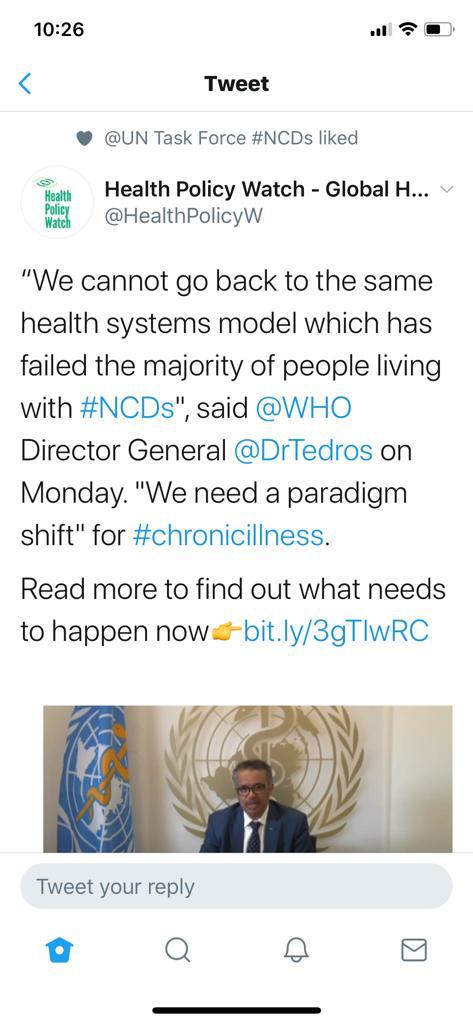Early in the COVID-19 pandemic WHO’s @DrTedr os highlighted the problems of access to health services by millions of people living with NCDs+ in his tweet. His tweet certainly mirrors what the SA NCDs Alliance and our allies have been saying since 2007 when the SA Human Rights Commission (SAHRC) held its first public hearings into the right access to health services.
os highlighted the problems of access to health services by millions of people living with NCDs+ in his tweet. His tweet certainly mirrors what the SA NCDs Alliance and our allies have been saying since 2007 when the SA Human Rights Commission (SAHRC) held its first public hearings into the right access to health services.
COVID-19 changed the parameters of vulnerability to include NCDs+, mental health, and reemphasised disability in all its shapes and forms.
SAHRC report 2007
15 years ago the primary focus was understandably on access to HIV/AIDS and TB services. It was the height of the communicable disease epidemic. And amidst our homegrown “AIDS-denialism”. It was also the midpoint of the Millenium Development Goals (MDGs) where vast amounts of funding were channelled into communicable diseases and maternal-child services. That pattern of expenditure and funding remains in place today.
Executive summary
The report’s executive summary is salutary: it fits today’s health service access issues in the COVID-19 pandemic. Just substitute NCDs+ for communicable diseases. And, we have a similar complaint today.
The report’s opening quote is ironically, but not surprisingly, from The AIDS Law Project, the early version of Section 27:
“We don’t yet have a definition of essential health services. This means we don’t have a base line for the right to health and it is impossible to cost the health service and thereby determine objectively what can be
afforded.”
We still don’t have the definition. But HIV unlike NCDs+ is a National Development Plan priority. As for the rest of the conclusions, they mostly are unmet PLWNCDs+ The main change to health services is that HIV/TB services dominate primary health care. We beg for evidence-based inclusion of NCDs + throughout the life-course. And, more not just a tack on to HIV, TB and STI services.
That is why we fight on. Read the SAHRC 2007 report on access to health services SAHRC 2007Health Report
